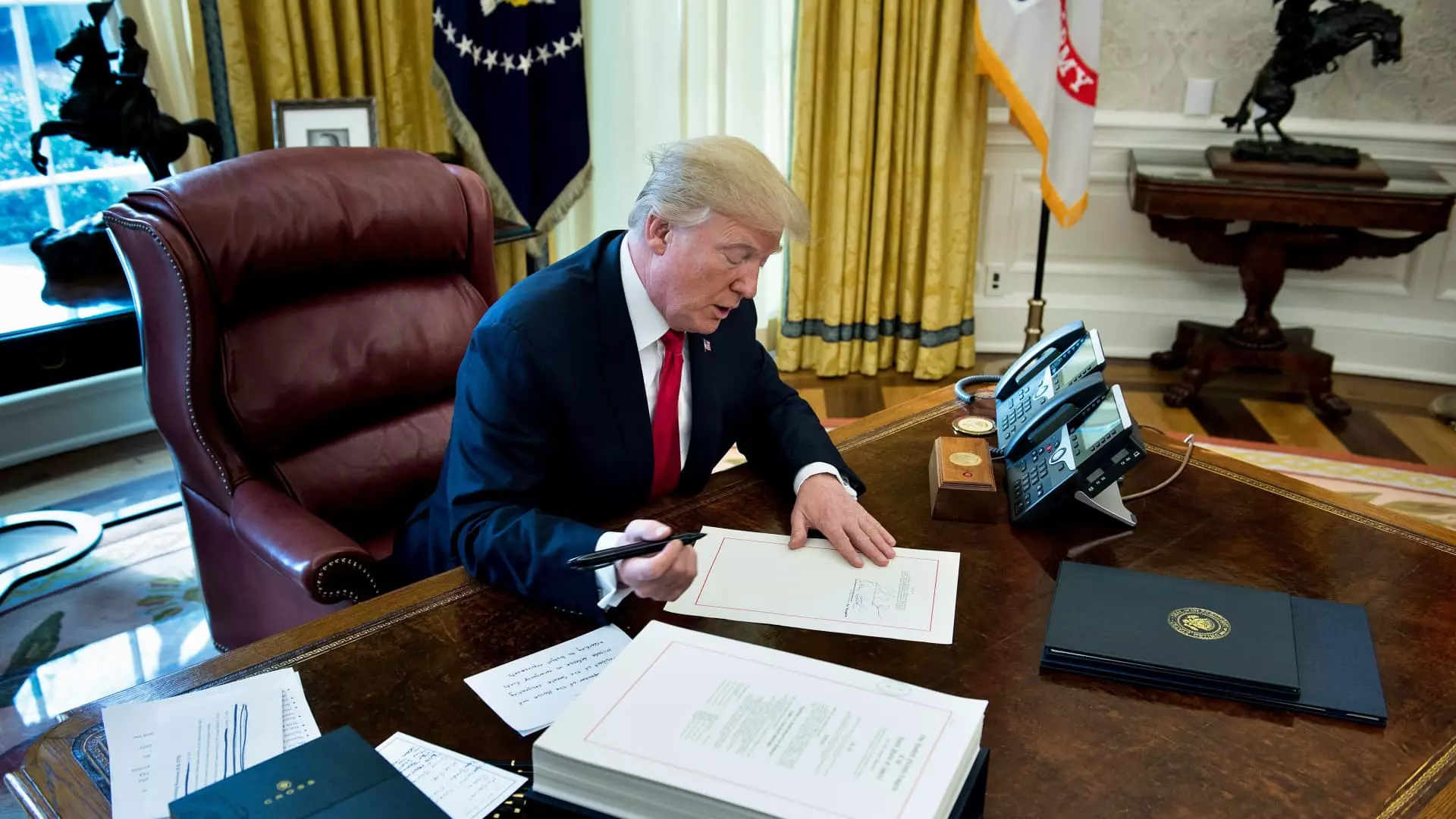As we move toward 2025, tax uncertainty looms over the financial landscape, especially with Congress gearing up to discuss the economic initiatives put forth by current presidential leadership. The lessons drawn from the 2017 Tax Cuts and Jobs Act (TCJA), spearheaded by then-President Donald Trump, may provide crucial insights for investors as they navigate this unpredictable terrain.
The TCJA introduced radical changes to the tax code that significantly affected both individuals and corporations. It mainly aimed to stimulate economic growth by reducing tax rates, maximizing standard deductions, and modifying various tax credits. Particularly noteworthy was the introduction of lower tax brackets along with an expanded child tax credit, which directly impacted millions of Americans. Now, as investments and financial planning strategies evolve, analysts emphasize the importance of understanding these provisions, especially as some of them are set to expire after 2025 without Congressional intervention.
Trump has pledged to fully maintain the expansive tax breaks initiated during his presidency. However, amidst the ongoing debate, the prospect of which proposals will gain traction within Congress is still uncertain, with the looming federal budget deficit complicating the discussions. This scenario adds layers of complexity for investors trying to prepare for potential tax changes.
The upcoming changes in 2025 will likely be substantial. Without legislative action, significant aspects of the TCJA, including expanded tax brackets and the enhanced estate and gift tax exemption, will face expiration. Specifically, the basic exclusion amount for estate taxes is scheduled to drop from $13.99 million per individual back to its 2017 levels when adjusted for inflation. This leads to an urgent need for financial planning and assessment for individuals who find themselves on the cusp of exceeding this threshold.
Financial experts like Ryan Losi warn that estate planning should not be taken lightly, especially for those with substantial estates. He advises that if the higher limits do not receive Congressional approval post-2025, clients must be ready to adapt their plans swiftly. For investors, this means re-evaluating estate strategies and considering options like gifting assets to heirs before these caps are re-established.
In light of the potential changes, financial advisors advocate a proactive approach. Investors are encouraged to hold off on making significant alterations to their tax strategies until the legislative dust settles. Ryan Losi’s perspective underscores a guiding principle: focusing on what is known rather than what could happen in the future. While speculation about new tax laws continues, investors must cultivate a robust portfolio adaptable to shifting policies.
Last-minute strategies, like prepaying property taxes and state income taxes to leverage deductions before the cap on SALT (state and local taxes) deduction took effect in 2018, reflected some investors’ tactical planning during the TCJA rollout. Similar foresight will be vital when navigating the impending tax legislation landscape that may emerge from the next set of Congressional negotiations.
Moving forward, strategic planning must encompass both legal and financial counsel to optimize tax liabilities. Collaboration with certified public accountants and tax attorneys can greatly benefit investors. Many advisors encourage their clients with estates nearing the exemption limits to consult with professionals regarding estate reduction strategies, which may involve setting up trusts, gifting assets, or engaging in charitable donations.
The 2025 fiscal climate requires vigilance and adaptability. Trump’s tax overhaul illustrates how sudden changes can come into play, sometimes unexpectedly, challenging advisors and investors to pivot quickly. As hinted by financial professionals, there may very well be surprises akin to those witnessed in 2017.
As we approach the changes anticipated in 2025, the intricate interplay between potential tax reforms and existing financial strategies cannot be overstated. Investors must remain aware of the legislative agenda, the varying levels of uncertainty, and the confidence that each provision of the TCJA brought to the market. With the understanding that tax legislation can evolve rapidly, proactive planning emerges as not just beneficial but essential for financial health in a fluctuating environment. The lessons learned from the TCJA may very well inform strategies that allow investors to navigate the potential turbulence ahead.

